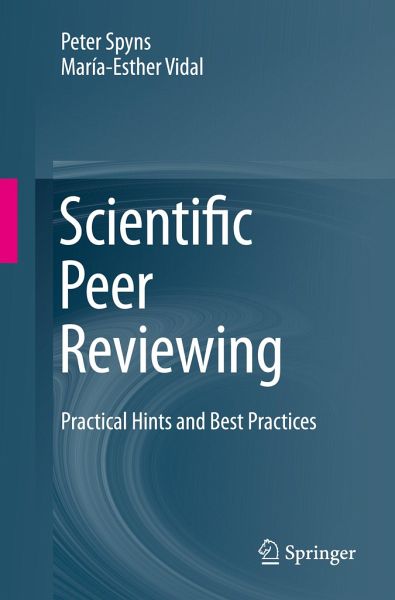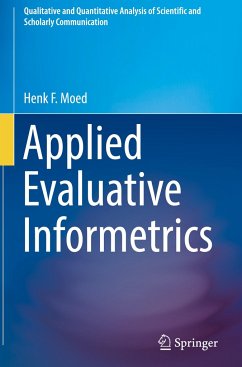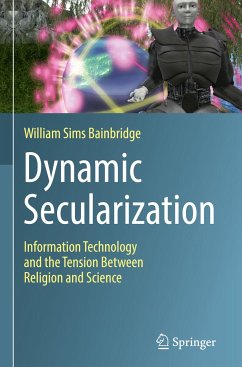
Scientific Peer Reviewing
Practical Hints and Best Practices

PAYBACK Punkte
8 °P sammeln!
This booklet provides a practical introduction to the practice of peer reviewing. Although it mainly focuses on paper reviewing for scientific events in computer science and business informatics, many of the principles, tips, tricks and examples can also be applied to journal reviewing and other scientific domains. Some can also be used when reviewing proposals for research projects or grants. In addition, many aspects of the book will benefit authors of scientific papers, who will gain deeper insights into how papers are reviewed and hence what to pay attention to when writing their own paper...
This booklet provides a practical introduction to the practice of peer reviewing. Although it mainly focuses on paper reviewing for scientific events in computer science and business informatics, many of the principles, tips, tricks and examples can also be applied to journal reviewing and other scientific domains. Some can also be used when reviewing proposals for research projects or grants. In addition, many aspects of the book will benefit authors of scientific papers, who will gain deeper insights into how papers are reviewed and hence what to pay attention to when writing their own papers.
The book is divided into three chapters, the first of which presents a brief overview of why peer reviewing is considered to be an important quality control instrument for scientific papers. In turn, the second chapter elaborates on the main principles a good reviewer should adhere to, including the most important aspects of personal attitude s/he should pay attention to whenwritinghis/her review. Lastly, the third chapter features a series of (anonymized) real life examples of actual reviewing practice, thus illustrating practical tips and tricks regarding the most common "do's" and "don'ts" of peer reviewing.
The book offers a structured introduction and practical reference guide, including good and bad examples, for junior researchers in computer science and business informatics in particular, as well as for anyone interested in peer reviewing in general.<
The book is divided into three chapters, the first of which presents a brief overview of why peer reviewing is considered to be an important quality control instrument for scientific papers. In turn, the second chapter elaborates on the main principles a good reviewer should adhere to, including the most important aspects of personal attitude s/he should pay attention to whenwritinghis/her review. Lastly, the third chapter features a series of (anonymized) real life examples of actual reviewing practice, thus illustrating practical tips and tricks regarding the most common "do's" and "don'ts" of peer reviewing.
The book offers a structured introduction and practical reference guide, including good and bad examples, for junior researchers in computer science and business informatics in particular, as well as for anyone interested in peer reviewing in general.<












